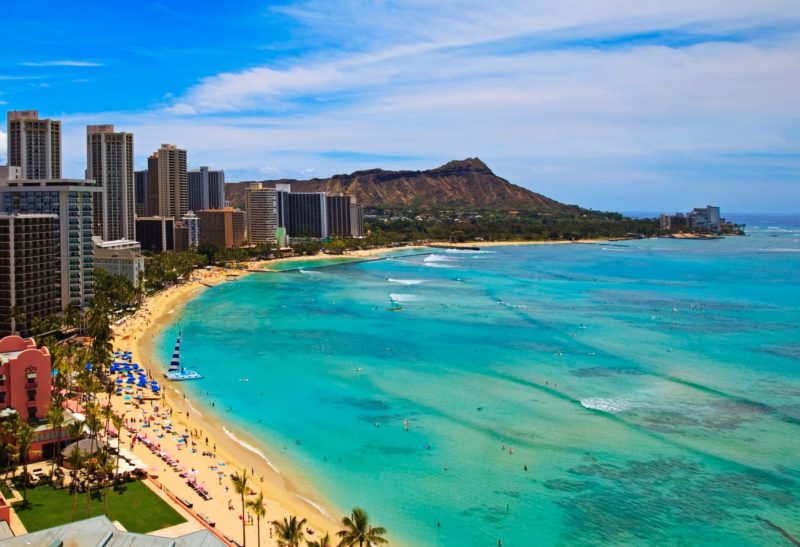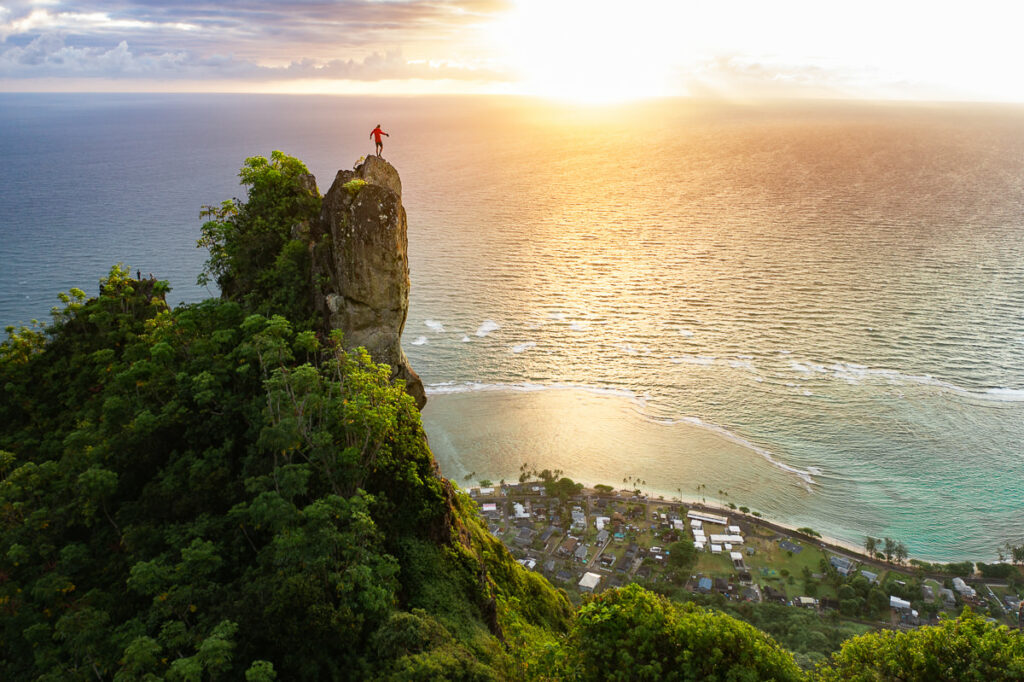Seasonal Hiking Guide: Best Times to Explore Oahu

Winter Hiking (December to February)
Winter in Oahu is a great time for hiking, with cooler temperatures making the trails more comfortable. During these months, temperatures typically range from 65°F to 80°F, providing a pleasant environment for outdoor activities. The Koolau and Waianae mountains offer stunning scenery that is especially lush and green due to the seasonal rains.
One of the main advantages of hiking in winter is the reduced risk of heat exhaustion. The cooler weather allows hikers to tackle more strenuous trails without the intense heat that can be present during other times of the year. This is an ideal season for exploring longer and more challenging hikes, such as the Kuliouou Ridge Trail or the Kaau Crater Trail.
However, winter also brings increased rainfall, which can make some trails muddy and slippery. It’s essential to wear proper hiking shoes with good traction and to check weather forecasts before heading out. Rain showers are usually short but can be heavy, so carrying a lightweight rain jacket is advisable. Despite the occasional rain, winter hiking in Oahu offers a refreshing and invigorating experience, with fewer crowds and beautiful, rain-enhanced landscapes.
Spring Hiking (March to May)
Spring is another excellent season for hiking in Oahu. The weather during these months is mild, with temperatures ranging from 70°F to 85°F. Spring is known for its vibrant blooms, making it a visually stunning time to explore the island’s trails. The hills and valleys are covered in colorful flowers and lush vegetation, providing a picturesque backdrop for your hikes.
One of the highlights of spring hiking is the abundance of native Hawaiian flora in full bloom. Trails such as the Manoa Falls Trail and the Maunawili Falls Trail are particularly beautiful during this season, with waterfalls flowing robustly and the surrounding forests teeming with life. This is also a great time to explore less popular trails like the Puu Maelieli Trail, where you can enjoy the beauty of the wildflowers in a more secluded setting.
Spring also offers relatively dry conditions compared to winter, making trails more accessible and less muddy. The moderate temperatures and lower humidity levels provide a comfortable hiking experience. It’s still wise to carry water and sun protection, as the sun can be strong, even in spring. Overall, spring is a wonderful time to experience the natural beauty of Oahu’s hiking trails.
Summer Hiking (June to August)
Summer in Oahu is the warmest season, with temperatures ranging from 75°F to 90°F. While the heat can be intense, summer also brings long days and clear skies, making it a popular time for hiking. The best way to enjoy summer hiking is to start early in the morning to avoid the midday heat and to choose trails that offer shade and cooler conditions.
Early morning hikes, such as the Lanikai Pillboxes Trail, provide stunning sunrise views and cooler temperatures. The hike is relatively short but offers rewarding vistas of the coastline and the Mokulua Islands. Another excellent option for summer is the Aiea Loop Trail, which is shaded and provides a comfortable escape from the heat.
Hydration is crucial during summer hikes. Always carry plenty of water and wear lightweight, breathable clothing. It’s also a good idea to wear a hat and apply sunscreen to protect yourself from the sun’s rays. Despite the heat, summer hiking in Oahu can be incredibly rewarding, with clear, unobstructed views and the opportunity to enjoy the island’s beauty in its full summer glory.
Fall Hiking (September to November)
Fall is an ideal time for hiking in Oahu, with temperatures ranging from 70°F to 85°F and gradually decreasing humidity. The trails are less crowded compared to summer, making it a peaceful season to explore the island’s natural beauty. Fall weather is generally stable, offering a mix of sunny days and occasional light showers that keep the landscape green and vibrant.
During fall, the Waimea Falls Trail is particularly inviting. The botanical gardens are lush, and the waterfall flows steadily, providing a perfect spot for a refreshing swim. The Kaau Crater Trail is also a great choice, offering a mix of challenging terrain and breathtaking views, without the intense summer heat.
Fall hiking conditions are typically dry, making trails more manageable and reducing the risk of slipping on muddy paths. This is a great time to explore some of the more strenuous hikes, like the Olomana Trail, where the cooler weather makes the steep climbs more bearable. Always check the weather forecast before heading out, as fall can sometimes bring unexpected rain showers.
Fall also marks the beginning of whale-watching season in Hawaii. While hiking along coastal trails, such as the Makapuu Lighthouse Trail, you might catch a glimpse of humpback whales migrating through the Pacific Ocean. The combination of pleasant weather, fewer crowds, and the possibility of whale sightings makes fall a fantastic season for hiking in Oahu.
Tips for Year-Round Hiking in Oahu
Hiking in Oahu is a year-round activity, but it’s essential to be prepared for the varying conditions each season brings. No matter when you hike, there are a few key tips to ensure a safe and enjoyable experience.
First, always check the weather forecast before heading out. Oahu’s weather can change rapidly, especially in the mountains. Knowing the forecast helps you prepare for rain, heat, or high winds that could impact your hike. It’s also wise to inform someone of your hiking plans and expected return time.
Proper footwear is crucial. Trails can be rocky, muddy, or slippery depending on the season, so wearing sturdy hiking shoes with good traction is essential. Additionally, carrying a small backpack with essentials like water, snacks, a first-aid kit, and a map or GPS device can be very helpful.
Sun protection is important year-round. Even on cloudy days, UV rays can be strong in Hawaii. Wear a hat, apply sunscreen, and consider wearing lightweight, long-sleeved clothing to protect your skin. Hydration is also vital, especially during warmer months. Bring more water than you think you’ll need to stay properly hydrated.
Finally, respect the natural environment. Stick to marked trails, pack out all trash, and avoid disturbing wildlife. Following these tips will help preserve Oahu’s natural beauty for future generations and ensure that your hiking experience is safe and enjoyable.
Exploring Oahu’s hiking trails during different seasons offers unique experiences and stunning scenery. Whether you’re enjoying the cooler temperatures of winter, the vibrant blooms of spring, the clear skies of summer, or the tranquility of fall, Oahu’s trails provide endless opportunities for adventure and natural beauty.
